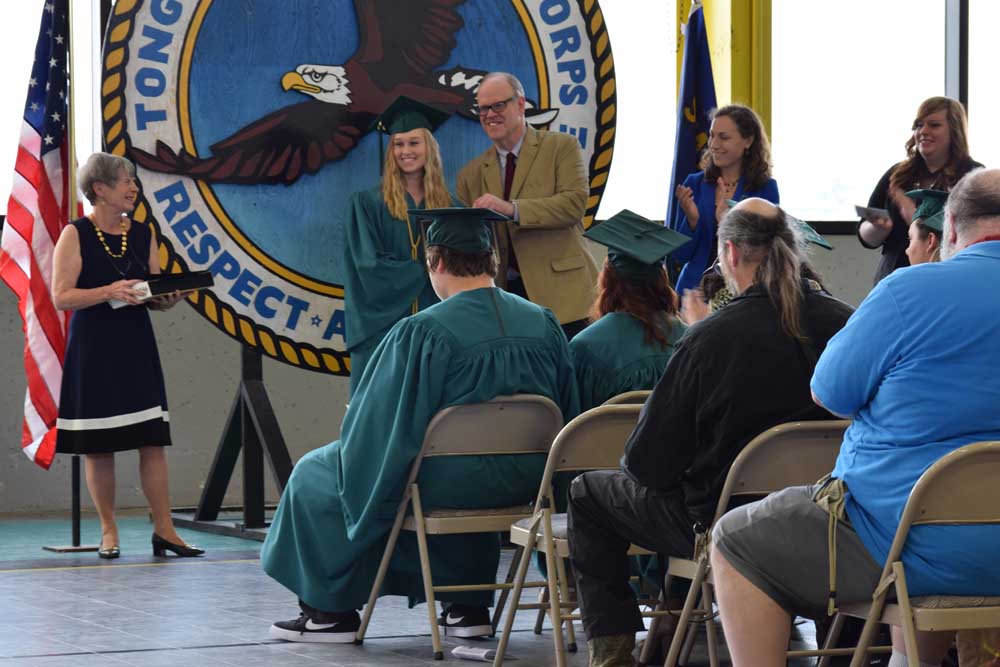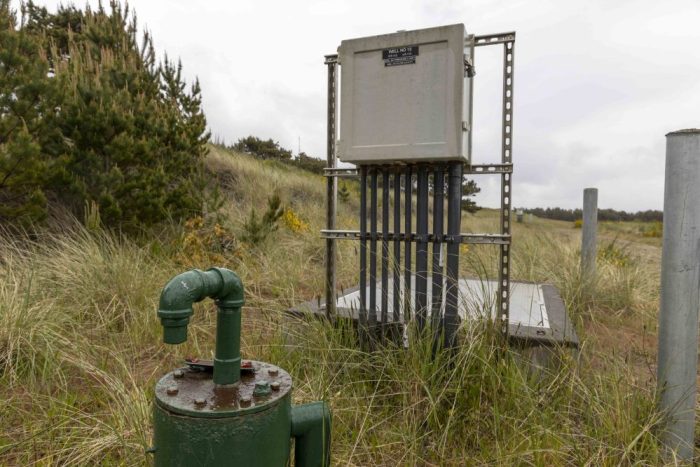High -Tech Part Of Owl Plan Drawing Fire
Published 5:00 pm Sunday, June 26, 2011
Any day now, the Northern Spotted Owl will have a final plan for its recovery. The iconic birds 20 years as a threatened species curtailed logging on federal forests, and shrank the timber industry to a fraction of its historic size. The new Recovery Plan hasnt even come out yet, and its already drawn a lawsuit.
Steve Ackers is doing what he, and lots of researchers do pretty often. He’s whistling. Here he is last summer, trying to find a pair of northern spotted owls in the Andrews Experimental Forest east of Eugene.
“Thats our spotted owl,” Ackers said.
It can take hours of hiking and whistling to track an owl down. Multiply that across thousands of known owl nest sites over the 20 years the owl has been on the Endangered Species list — and youre talking lots of worn out shoes, chapped lips, not to mention, time and money.
The costs of tracking owls got federal officials — like Paul Henson with the U.S. Fish and Wildlife Service — looking for alternatives. Henson says federal biologists and land managers could have relied on the tried and true old way of accounting for owls:
“You know, owl circles and cruder estimates of owl presence, or doing expensive spotted owl surveys to determine whether owls are there or not, over a series two or three years at a time. And those are quite labor-intensive, and expensive,” he said.
So, federal officials decided to get scientists together to pool their research for a unique collaboration.
Henson says the goal was to chart with a computer model how the owl is doing.
“We asked the modelers to collect as much data as they can, to use state-of-the-art technology, whether its computer modeling technology, or it’s Google-earth,” he said.
Henson says this technology wasnt around when the spotted owl first appeared on the Endangered Species list. He says the technology – the modeling tool can help his own agency, as well as the Forest Service and other land managers, forecast how activities could affect the owl.
“We do not read the models as doing those things,” Ann Forest-Burns said.
Forest-Burns is with the industry group, American Forest Resource Council. Her group filed a lawsuit late last year over the modeling or more specifically, the team the feds put together, to build the model.
The modeling teams work was not being done in the open light of day, as required by the Federal Advisory Committee Act,” she said.
Forest-Burns has reservations about the information the model produces, as well.
The model has three main components. The foundation is a database of habitat information. On top of that is a program intended to test how habitat would respond to different things like logging or conservation measures. And last is a population model, to predict the behavior of the owls themselves.
“I guess I have an on-the-ground persons bias about modeling. We often find that the more you crunch data, the more removed it becomes from something thats actually going on, on the ground. You can get into a garbage-in, garbage-out situation,” she said.
Fish and Wildlife supervisor for Oregon, Paul Henson, says the model promises to be a significant improvement.
“This modeling process was built upon data associated with 4,000 owl sites. So it has an extremely high probability of being correct,” he said.
But Fish and Wildlifes modeling effort also has critics among environmentalists.
Doug Heicken is the conservation and restoration director for the environmental group, Oregon Wild.
“All models are simplifications of reality,” Heicken said.
He says the model minimizes one of the spotted owls biggest problems: the invading competitor, the barred owl.
“The models that the Fish and Wildlife Service has developed with the help of some experts for instance doesnt consider the effects of the barred owl very well. It doesnt deal with the fact that spotted owl habitat needs to have snags and dead wood, that the model cant represent very well, because you cant see it from a satellite,” he said.
Fish and Wildlife officials say Heicken has it wrong. They say the model has lots of on-the-ground data, including information on the barred owl.
The reason anyone cares about the modeling is that it’s more than data and charts. It’ll help judge how logging or habitat plans affect the threatened owl.
And it will help create another document with potentially bigger impact than the Recovery Plan. A map of federally-protected areas called “critical habitat” is due out by November.
Read more on news.opb.org.





